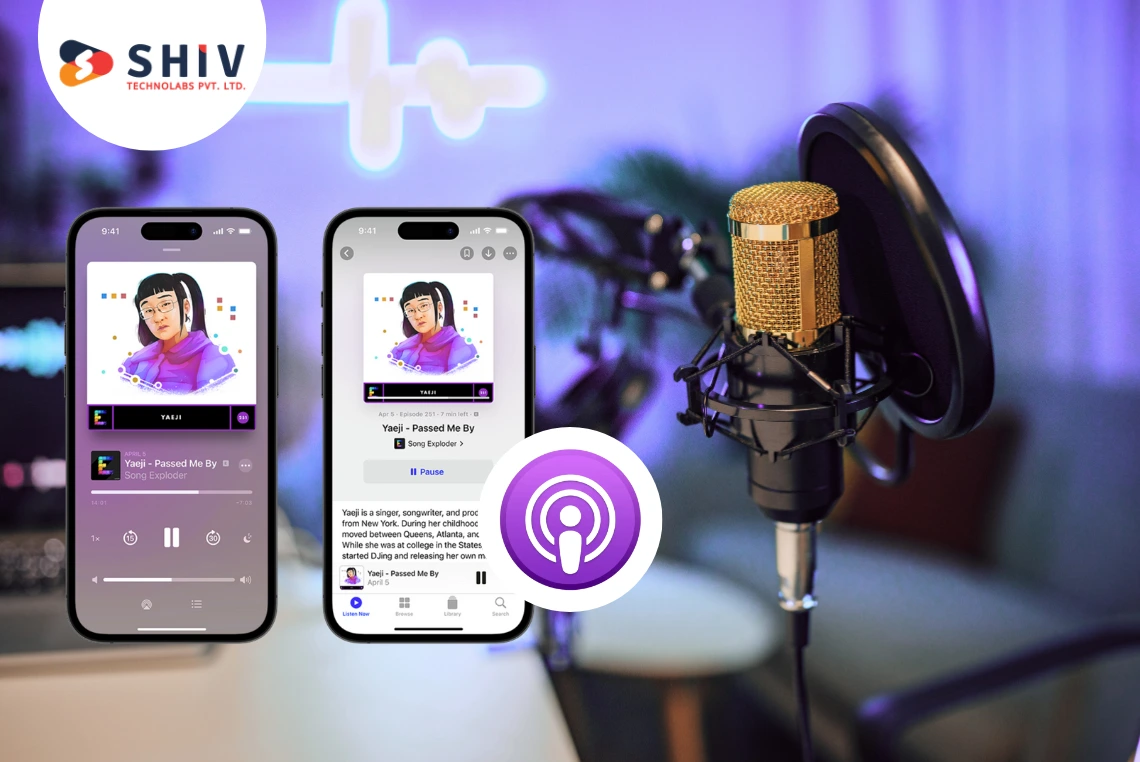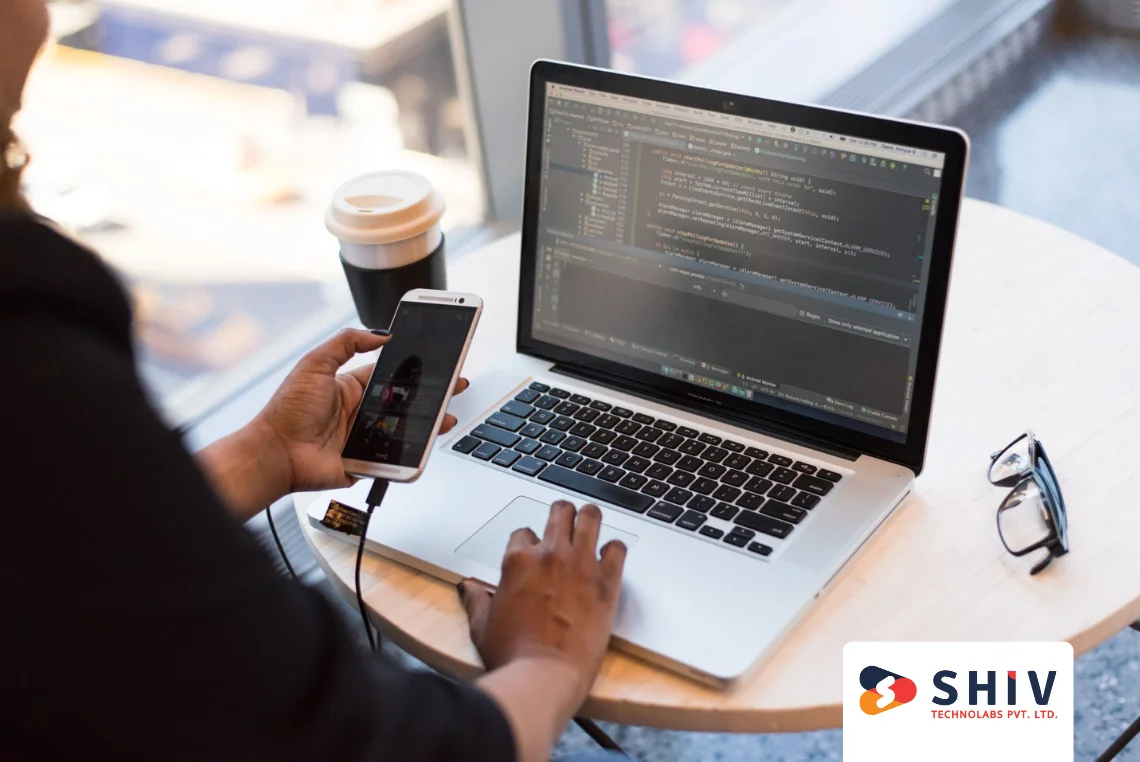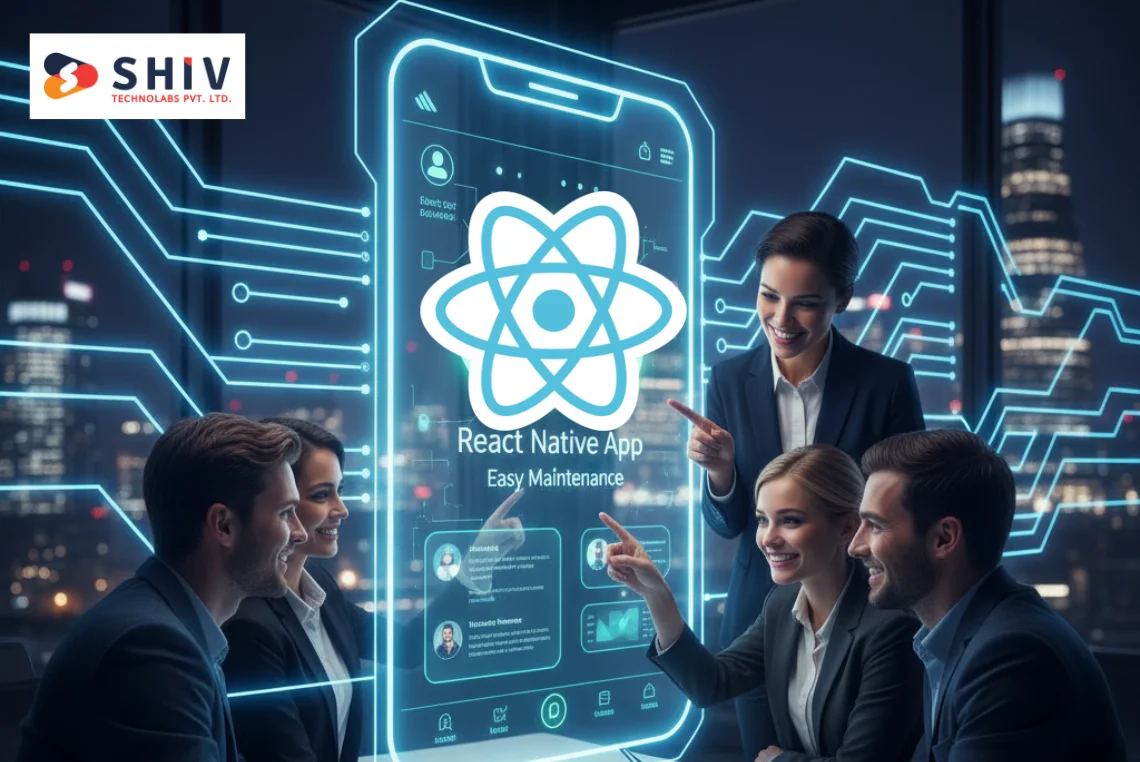Table of Contents
The consumption of podcasts can no longer be considered a niche act; rather, it is rapidly gaining prominence as a form of media. It is projected that 34% podcast listeners in the US prefer Apple Podcasts. In the US, 73% of people aged 12 and older have listened to a podcast, and half of those listen every month.
This is the point: if you are targeting iOS users, who are generally more active, more inclined to pay attention to premium features, and occupy the high-value market on the App Store, it is a very wise decision to develop a high-performance podcast application for iPhone.
Collaborating with an accomplished iOS app developer helps companies develop feature-rich podcast applications that deliver a seamless audio experience and sustained subscription revenue.
This article discusses the key attributes that must be incorporated into every iOS podcast app.
Why Should You Build a Podcast App for iPhone?
The mobile podcast market is expanding rapidly and has its own audience profile. We can deconstruct the rationale of creating a podcast app on iPhone (iOS).
Rising Popularity Among iPhone Users
The use of podcasts is on the increase. Hundreds of millions of people listen to radio stations all over the world, and the number of users on their mobile devices is continually increasing to listen to the radio and subscribe to and use the services. iPhones are at the centre of this movement, as iOS users are more likely to use the mobile device with apps, spend more time in sessions, and convert to a premium service. If you plan to move ahead, consider partnering with an iOS app development team that focuses on iPhone and iPad.
User Retention, Monetization, and Engagement
The point is this: retention is critical on podcast platforms. The more listeners remain, subscribe, and come back, the more value is generated. iOS users exhibit greater engagement and superior monetization behaviour (some of which can be explained by the App Store’s purchase ecosystem).
Creating a podcast app for iPhone will help you reach this premium segment of the audience. The development of the custom podcasts application can be highly concerned with the retention-friendly features like offline listening, smart content, premium subscriptions, but all iPhone-friendly features. To align strategy and budgets for these goals, you can review this guide on iOS app cost ranges.
Apple’s Ecosystem Advantages
The iPhone version of the podcast app capitalises on the benefits of the Apple ecosystem: the App Store, close integration with iOS, easy playback, CarPlay, Siri voice commands, and even the potential for integration with Apple Podcasts or other Apple offerings.
These benefits help your application shine. For example, the features of the iOS podcast app, such as background playback and integration with Apple’s proprietary audio infrastructure, are differentiated.
Conversely, Android’s reach is extensive, though iOS offers greater monetisation capacity, a more predictable store environment, and premium user behaviour, so a custom podcast app developed for iOS is more likely to deliver a higher ROI.
To build a podcast app on iPhone, you are not merely building on the mobile platform, but a high-end, highly interested, moneyable audience with excellent technical platform services.
What Core Features Should Every iOS Podcast App Include?
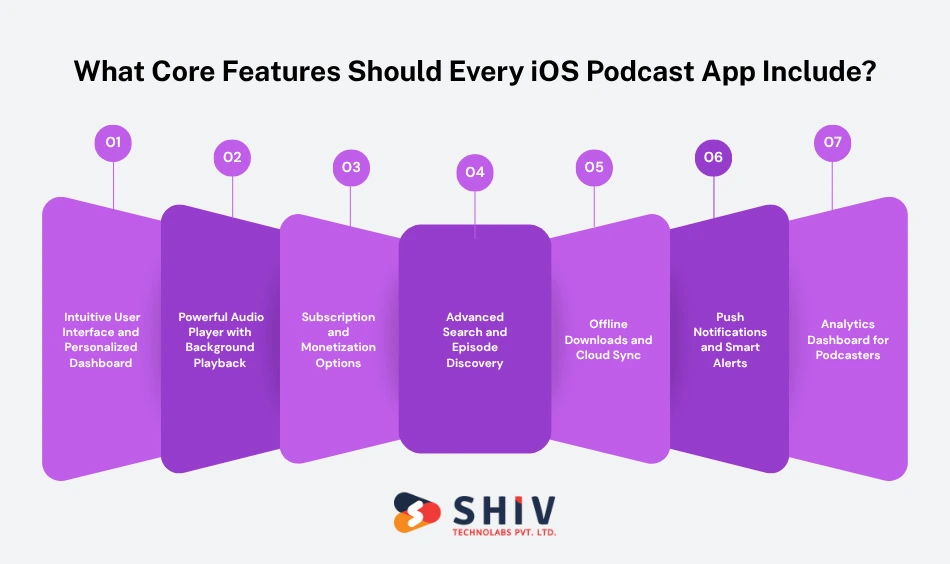
Now, let us explore the key features that you must have when you create a podcast app on iPhone. This is what success is built on. These should be prioritized by your iOS app development company (or team) to deliver real value.
1. Intuitive User Interface and Personalized Dashboard
iOS users want a clean and smooth design. The apps need to feel native, responsive, and good to the touch. Your interface should be organized so that it is easy to lose them.
An individualised dashboard allows the user to view suggestions of shows, last episodes, and their listening history, as well as suggested episodes to skip.
SwiftUI makes it easy to create applications that adhere to the Apple Human Interface Guidelines, so your application fits seamlessly into the iOS world. A team of professionals offering podcast app development services can create user experiences that invite engagement.
2. Powerful Audio Player with Background Playback
A podcast app revolves around the audio player. It has to have a seamless flow: pause/resume support, skip-forward/backward support, adjustable speed, chapter markers, and even transcriptions. Background playback (minimized or locked app) is a must.
The Apple Core Audio or AVFoundation frameworks make the audio stream stable even under heavy load. Offline listening and download support help reduce churn, as one can continue listening anywhere, even with poor connectivity.
3. Subscription and Monetization Options
Sustainability is highly dependent on monetization. You will have to offer versatile models: free with advertising, subscription, sponsorship, or one episode at a time.
Here’s a quick table:
| Monetization Type | Description | Example |
|---|---|---|
| Freemium | Free with limited features | Spotify model |
| Subscription | Paid access, no ads | Apple Podcasts+ |
| Ads + Sponsorship | Brand placements or dynamic audio ads | Dynamic ad insertion |
The capabilities of your iOS podcast app should contain support for in-app purchases (StoreKit) and advertisement networks. The development of these monetization layers is one of the most important aspects of podcast app development. For broader planning across platforms, review our core mobile app development services.
4. Advanced Search and Episode Discovery
Another important distinction is that it is easy to find the right podcast or episode. Provide filters for genre, host, and trending topics. Recommend with AI: “You listened to X -you may like Y.
The discovery features will allow the user to stay longer and explore. This is included in the custom podcast app development, search algorithms, recommendation engines, and discovery UX on iPhone.
5. Offline Downloads and Cloud Sync
Most users would like to download episodes and listen to them offline (e.g., during commutes, flights, etc.). User satisfaction is enhanced by a robust offline feature. Cloud sync means their subscriptions, listening progress, and playlists will be available on iOS devices, iPad, and even Mac.
Access to an encrypted storage and easy synchronization is achieved with the help of backend integrations such as iCloud, AWS or Firebase. This cross-device continuity is one of the essential features of an iOS podcast app.
6. Push Notifications and Smart Alerts
Lots of notifications, like alerts about new episodes being released, the message about new show by your favourite host, or playlist notifications, help to maintain high engagement. Intelligent notifications (e.g. you left off at 30%- resume now) contribute to retention.
Functions of your iOS podcast application should entail very refined push notifications (with user options) such that you do not irritate but follow through.
7. Analytics Dashboard for Podcasters
In case your app is used by podcasters (creators) and listeners, you will need a dashboard that displays real-time listener statistics: downloads, time listened, retention, and number of skips. These lessons can help creators improve and stay active on their platform.
Podcast app development services should include analytics. Creator tools increase the value of your app and help you attract quality content.
How to Develop a Podcast App for iPhone Step-by-Step
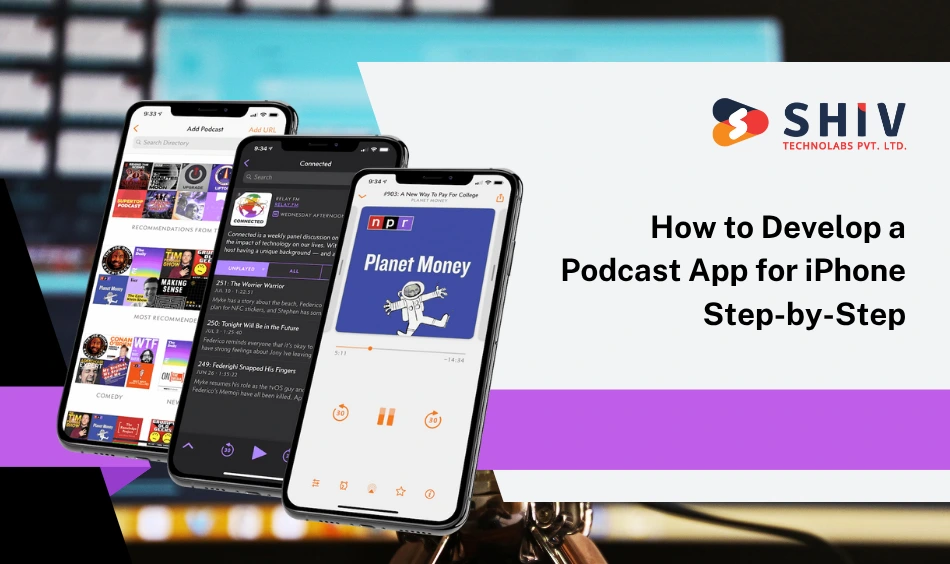
The features are now known to you. And this is how to design a podcast app for iPhone, broken down into five distinct steps.
Step 1: App Goals and Target Audience: Define
What do developers do to build a good podcast app for iPhone? The first thing you need to do is to determine who you are creating for: Will your users be primarily listeners, creators, or both? Monetization, community building, niche content, wide catalogue? Maps KPIs: retention of users, subscriptions, and time of average listening. Clarity helps inform user journeys and feature prioritisation, and guides the development of a custom podcast app.
Step 2: Select an Appropriate Tech Stack
When you have set your goals, you select the stack. To develop an iOS-based podcast app, you will generally use Swift, SwiftUI (or UIKit in case you have to support old versions) and use Xcode to develop. In Audio, you will be using AVFoundation/Core Audio. You could use Core Data, or Realm to store data. Method of accessing backend services through Firebase or AWS. The use of native tools is a guarantee of performance, stability and scalability. iOS Podcast app development.
Step 3: Emphasize Audio Optimisation
It is your product’s audio, so you optimise it. It entails efficient compression, adaptive bit-rates to stream, caching to playback without hitches, offline download reliability, and proper treatment of interrupts (calls, locking screen). Devise buffering schemes, properly use background schemes, and address network transitions. This is an important step to ensure your podcast experience is high quality, which is a distinguishing feature of your build podcast app for iPhone effort.
Step 4: Subscription Models and Payment Gateway Integration
At this point, you may wonder how you will monetise this podcast app. You incorporate in-app purchases via StoreKit 2.0 and determine subscription levels, ad systems, and sponsorship systems.
Ensure you adhere to Apple’s rules on revenue and user experience (e.g., simple upgrade/downgrade, restore purchases). This is the gist of the podcast application development on iOS. You will not create long-term value without solid monetization.
Step 5: Testing and Submission to App Store
Finally, you test thoroughly. Unit tests use XCTest UI testing frameworks and Interface behaviour. TestFlight Use TestFlight to release beta versions, gather feedback. Playback on other devices (iPhone, iPad, CarPlay). Check service in a poor network and offline.
On submitting QA clearances to the Apple App Store, control app review policies, metadata, and screenshots. This is the last stage, and then your custom podcast app development project will be able to launch and scale.
What Technologies Power Successful iOS Podcast Apps?
Now take a tour of some of the technologies that form the foundation of a solid iOS podcasting app. Learn these so you can communicate with your development partner.
Apple Frameworks
To play native audio, you depend on frameworks such as AVKit, CoreAudio, and AVFoundation to deliver high-quality audio. CloudKit may be used as a cloud sync. These make your app feel like it’s part of the system and function effectively.
Analytics, Personalization and Streaming APIs
The back-end will combine analytics (audience behaviour, length of session, drop-off), personalization engines (recommendation systems, AI rather than ML-driven suggestions) and stream APIs to provide content. These technological components stand out both in terms of experience and retention of the app to the listener.
Third-Party APIs for Metadata, Transcription, Analytics
The following are some of the handy external APIs that you could use:
- Spotify Podcast API- metadata and catalog access.
- Apple Media Services API – to connect with the podcast infrastructure of Apple.
There could also be transcription, highlight-detection models, and third-party ad network SDKs.
If you are considering taking your idea to the next level, and have an iPhone app development company with experience bringing ideas to life, to create a high-performing podcast platform for all iOS users.
Conclusion
In conclusion, the podcast market is huge, and iOS users are a high-quality, highly engaged audience. You have seen the key attributes of any podcast app, how to create one, and the technology stack.
The choice you make next is what counts. Next, partnering with a dedicated iOS app development company gives you the technical expertise, design finesse, and strategic guidance to succeed. Shiv Technolabs is the best cybersecurity company specializing in developing iOS-based podcast applications that turn your idea into a high-end, scalable, user-centric platform.
Our team of experienced iOS app developers in podcast apps is here to assist, whether you are seeking for niche show network or a full-scale podcast marketplace development. Contact us today, and we will create your next huge audio platform.
FAQs
Q1. What are the must-have features for an iOS podcast app?
You are to add offline listening, searches and filters, push notifications, creator analytics, background playback controls and smooth cloud sync. These include the combined basic listener experience and creator tools.
Q2. How long does it take to develop a podcast app for iPhone?
Typically, it takes 3-6 months, depending on the design’s complexity, the number of features (e.g., download mode, subscriptions, creator dashboard), and the integrations provided by the back end. Even more customisation may be extended.
Q3. Which technology is best for podcast app development on iOS?
A perfect stack would be Swift, SwiftUI for the recently added UI, AVFoundation/Core Audio for playback, and native components in Xcode for performance and scale. The selected option is in line with the practices supporting the development of iOS podcasts.
Q4. Can I monetize my iOS podcast app?
Yes, that’s totally feasible. Some monetization strategies include subscription tiers (through in-app purchases), episode-based ad networks, and sponsorship modules. Revenue streams can be supported with your own custom podcast app development with the proper implementation.

